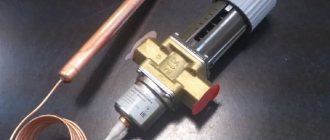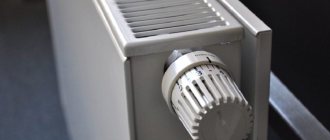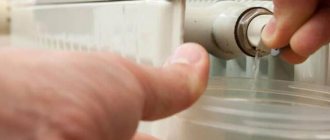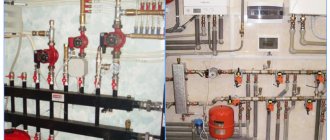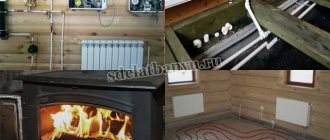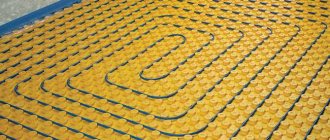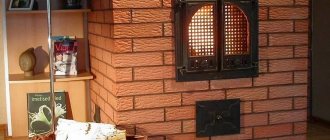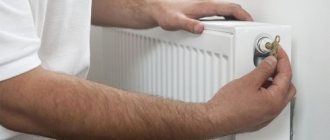In winter, the humidity level in the apartment drops to 15–20%. And that's bad. Why?
Firstly, because dehydrated air dries out the skin and mucous membranes, contributes to a decrease in immunity and the development of diseases such as sinusitis and sinusitis. By the way, young children are especially sensitive to its effects.
The second reason is that insufficient humidity harms plants, books, wooden furniture and musical instruments.
The optimal humidity level in an apartment is about 40–60%.
You can measure air humidity using a special device - a hygrometer. If you don't have one, use the following method. Fill a glass with cold water and leave it in the refrigerator until the temperature of the liquid drops to 3–5 °C. Then take out the glass and place it in a room away from the radiators. Observe the glass surface for five minutes. Evaluate the result this way:
- If the walls of the glass first fog up and then dry out after five minutes, the air in the room is dry.
- If after five minutes the glass remains foggy, the humidity is average.
- If streams of water appear on the glass, the humidity is increased.
Is the air dry? Then use one of the following techniques to restore normal humidity levels.
Method 3 – vessels with water
This very simple technique has been known since ancient times. Place water tanks (vases, jugs, decorative buckets, bowls) throughout the apartment (can be on window sills or near radiators). Evaporating moisture will provide good air humidification. The main thing is not to forget to add water on time.
Important: this effective method has a significant drawback - after some time, bacteria and microorganisms will begin to multiply in the water. To prevent this from happening, wash them well.
Boil
All you need is a stove and a saucepan or kettle.
- Option 1. Bring water in a saucepan to a boil and place it on a table or windowsill so that the steam humidifies the apartment.
- Option 2: Boil the kettle and leave it on low heat for longer evaporation. This technique can be used when you are preparing food (the air often becomes dry at this time).
You can also add a few drops of tea tree or eucalyptus oil to the water. Their aroma is soothing, and the vapors kill germs and reduce the risk of colds and flu. In addition, you can throw cinnamon sticks, herbs or other spices into the water to make the air fragrant.
Method 5 – home greenhouse
To increase air humidity at home, you need to grow flowers that have a beneficial effect on the microclimate. In this case, water evaporation occurs through the leaves.
There are several plants that not only moisturize, but also disinfect, purify and ionize the air, and also saturate it with useful organic substances:
- Ficus;
- Indoor linden (sparmania);
- House fern (nephrolepis);
- Dracaena;
- Cyperus;
- Hibiscus;
- Fatsia;
- Scheffler;
- Monstera.
To enhance the effect, regularly spray the leaves with water.
Temperature recommendations
The following factors influence humidity:
- weather;
- climate zone;
- season;
- Atmosphere pressure.
According to GOST, the optimal humidity indicator for comfortable indoor living is 30-60%. In winter, 30-45% is considered normal, and in summer - 30-60%.
It is recommended to take into account that in order to maintain maximum concentration and performance, the humidity in the office should be 40-60%.
In a children's room, the optimal humidity level is 50-60%, and in the bedroom for adults, in the kitchen and bathroom - 40-50%.
Method 7 – home humidifier
Home craftsmen offer two options for home humidifiers:
1. Bandage moisturizer:
- Place a bowl or jar of water on the floor;
- Hang a bandage or piece of fabric folded in several layers on the battery. Its end should hang into a container of water.
The bandage will absorb water, and the warm battery will evaporate it.
2. Humidifier from a plastic cup:
- Cut a cup with a tail from a plastic bottle or tin can;
- Attach it to a pipe near the battery and fill it with water.
Or you can tinker a little and make a humidifier like this:
Dry things in the room
Another way that doesn’t require any effort on your part. Just place the dryer with washed clothes next to the radiator: the clothes will dry faster and the air will be saturated with moisture.
The main thing is that there are no cleaning products left on things. Otherwise you will breathe chemicals.
A similar way to humidify the air is to hang wet towels on the radiator. You can increase the lifespan of such a humidifier using a water bottle.
freee.ru
How to build such a structure is described in detail here.
Method 8 - aquarium
How to humidify the air in an apartment without a humidifier? Place an aquarium in your room - it will be both beautiful and useful! How does this method work?
All aquariums have a special system that filters the water. A certain amount of liquid passing through it will evaporate into the air. This process applies to the entire surface of the water. Remember, a small aquarium is unlikely to be able to cope with the humidification of the air in a large room, so choose the size. The larger the volume, the more moisture will evaporate.
Why humidify the air?
Too high humidity (above 60%) negatively affects not only household appliances, furniture, and room decoration, but also the health of people living in the house. Thus, with increased humidity levels in the apartment, fungi, mold, and pathogens quickly develop.
Too dry air also contributes to a significant reduction in indoor living comfort. When the rate drops to 40% or below, people living in the apartment may experience the following symptoms:
- dry mucous membranes, problems when using contact lenses, manifested by discomfort in the eyes;
- rhinitis, children often develop crusts in the sinuses;
- cough, sore throat;
- exacerbation of allergic reactions, asthma;
- sleep disturbance;
- dry and flaky skin, brittle hair and nails;
- fatigue, decreased concentration, drowsiness, headaches;
- increased irritability.
Note: Dry indoor air is a common cause of premature aging of the epidermis and decreased immunity.
In addition to health problems, low air humidity can negatively affect the condition of indoor plants, as well as wooden doors and panels, parquet and other interior items.
High humidity: causes and consequences
The range of relative humidity optimal for human well-being is considered to be 45-60°. According to SNiP documents, the maximum permissible humidity in an apartment is 65%; in the autumn-winter heating period, the values are much lower, but are also considered the norm - from 40 to 45°.
For building materials, furniture, books, 40-50% is optimal; for indoor plants this figure is higher: it is 60°. Humidity that reaches a level of 70% becomes damp, the conditions in which the rapid appearance of a dangerous aggressor is possible - mold, whose spores can fly into any apartment. To determine the humidity in the house, purchase a basic household hygrometer. Or a weather station - a device that measures both temperature and humidity.
Causes
What causes an increase in water vapor in the air? You may encounter this anomaly if:
- the apartment is on the ground floor, and the basement of the house is constantly damp;
- it is located on the top floor of a building whose roof is leaking or there is a defect in the drainage (overhang);
- ventilation does not work well: it cannot cope due to sealed plastic windows, old ventilation shafts clogged with debris;
- errors were made during the design, resulting in poor-quality or incorrectly designed thermal and waterproofing;
- During the renovation, finishing materials that cannot “breathe” were used;
- the owners have many indoor plants and have an aquarium;
- there are unclosed seams or large cracks in the walls;
- Linens are regularly washed and dried in the apartment;
- there was a flood caused by neighbors;
- The owners have leaking taps or pipes.
Another factor leading to damp walls is incorrectly selected thickness and type of insulation, and its installation without preliminary thermal calculations. In this case, the dew point - the place where condensation forms (the meeting of warm and cold air masses) - remains just between the wall and the thermal insulation material. The result is the transformation of the house into a “thermos”, the accompanying dampness and the rapid appearance of mold.
There are no other reasons that provoke damp and uncomfortable conditions. Several of these factors can be to blame for dampness. By eliminating one, the most serious one, or several of them at once, you can quickly bring the indicators back to normal. If you don’t take any action, mold will soon become an unwanted visitor, and it’s not so easy to get rid of.
Consequences
Sometimes owners begin to suspect something is wrong only when an unpleasant smell of dampness appears, coming from things, curtains or furniture. However, this is not the main threat, since there are also more serious consequences of oversaturation of the apartment with moisture. Among them:
- Almost guaranteed mold growth. Some of its types (for example, black fungus) are very dangerous for the respiratory system. The very first sign of a dangerous neighborhood is allergic reactions, constant colds, and a runny nose.
- Living in such conditions is a risk of rapid weakening of immunity and the emergence of very dangerous diseases. Prolonged contact with mold spores is fraught with the appearance of the worst of them: the formation of cancer cells.
- Since excess humidity is often caused by poor ventilation, double discomfort occurs. Carbon dioxide accumulates in the air, causing decreased concentration, lethargy, and fatigue.
- Damage to the walls, which means peeling of the finishing material. Possible swelling of the parquet.
- The appearance of plaque on clothes and linen.
High humidity poses the greatest threat to children, since the growing body, due to a fragile immune system, is extremely susceptible to all unfavorable conditions. Therefore, at the first suspicion associated with an unusually high level of moisture, immediate action must be taken.
No. 6. Wet cleaning
Well, what would we do without her! Wet cleaning is a real salvation both in the heat, and in the struggle for clean air, and in efforts to increase the level of humidity. True, this measure alone cannot provide more than 2-3% humidity, and it requires time from you, but in combination with other measures it will work well.
The most unsuitable areas for installation
Now let’s look at where you don’t need to install a humidifier.
Rooms that do not require either constant or interval humidification include the following:
- bathroom;
- toilet;
- combined bathroom;
- corridor;
- hallway;
- wardrobe.
In the bathroom and toilet, humidity is always at a high level, so for these rooms it is more important to think through the ventilation system, the same applies to the combined bathroom. An exception is a small decorative ultrasonic device with an aromatherapy function, which is turned on only during bathing or spa treatments.
It can replace scented candles or bath oil
The exception is a small decorative ultrasonic device with an aromatherapy function, which is turned on only during bathing or spa treatments. It can replace scented candles or bath oil
In the dressing room, excess moisture will only cause harm, especially to items of clothing made from natural fabrics and fur.
And in the corridor or hallway, a humidifier will be superfluous, since they already communicate with adjacent rooms. Moreover, in tight spaces, every centimeter of free space is important, so an additional device will do more harm than good.
How does professional equipment work to dehumidify indoor air?
The most reliable way to get rid of annoying dampness in your home is to buy a professional dehumidifier. Especially when other methods did not have the desired effect.
There are two types of professional dehumidifiers:
stationary dehumidifier - installed on the wall, in the future it will be impossible to move it, so choose the right place for mounting;
Stationary dehumidifier
portable - not attached to the surface, it is easy to use and mobile, it is small in size, so it is easy to move it to the required room.
Portable dehumidifier
No. 10. Aqua soil
These are colored balls that are actively used in gardening. They can quickly absorb water and then evaporate it. That's what we need. It is worth pouring the aqua soil into containers and placing it around the apartment. Since the balls are colored, they will not only moisturize, but also decorate the room. They need to be watered once and then stirred occasionally so that all layers of the substance release moisture back. Sometimes it is worth adding water.
